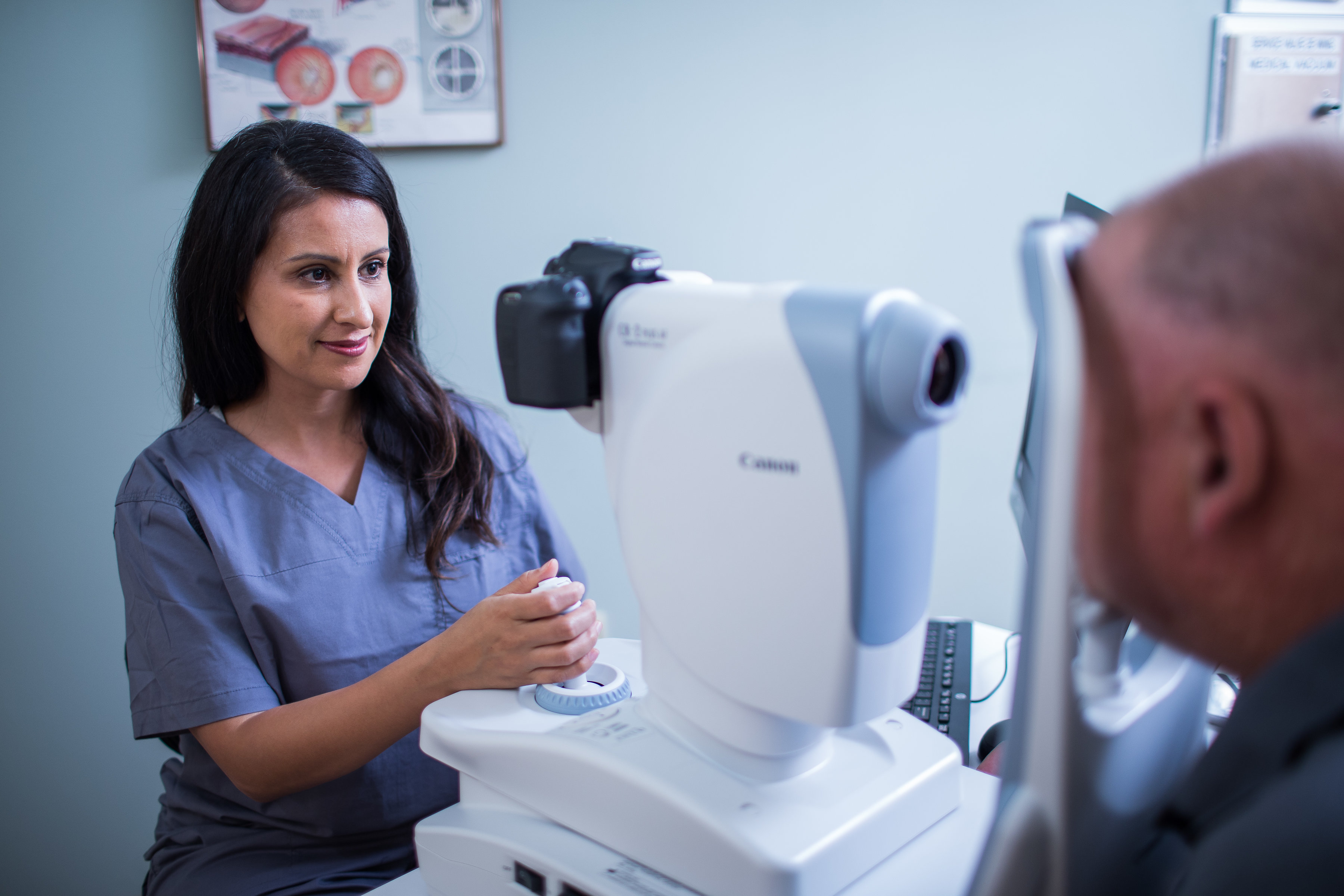Andalusia Eye Doctors: Professional Ophthalmologists in Your Area
Wiki Article
The Pros and Cons of Various Refractive Surgeries for Enhanced Eyecare

LASIK Surgery
LASIK surgery is a commonly performed refractive treatment that intends to remedy vision problems such as nearsightedness, farsightedness, and astigmatism. Throughout the treatment, a thin flap is created on the cornea, and a laser is made use of to reshape the underlying tissue, dealing with the refractive mistake.One of the primary advantages of LASIK surgical treatment is the rapid renovation in vision experienced by several people. A lot of individuals see a substantial enhancement in their eyesight soon after the procedure, with marginal downtime required for recuperation. Furthermore, LASIK is known for its high success price and low occurrence of issues when performed by knowledgeable specialists. However, like any kind of procedure, LASIK also lugs some risks, consisting of dry eyes, glow, halos, and under or overcorrection of vision. It is necessary for people thinking about LASIK surgical procedure to undergo an extensive examination by an eye care professional to identify if they are ideal candidates for the procedure.
PRK Procedure
The PRK treatment, likewise understood as Photorefractive Keratectomy, is a kind of refractive surgery that aims to remedy vision issues similar to LASIK surgical procedure. Unlike LASIK, which entails creating a flap in the cornea, PRK works on the surface layer of the cornea.One of the benefits of PRK over LASIK is that it removes the risk of flap-related difficulties since no flap is produced during the surgery. Despite the longer healing period, PRK can be an appropriate choice for people seeking vision correction surgical treatment.
SMILE Surgical Treatment
A sophisticated refractive surgical procedure strategy gaining popularity in the field of ophthalmology is SMILE Surgical treatment. Little Cut Lenticule Extraction (SMILE) is a minimally invasive treatment that deals with vision by improving the cornea using a femtosecond laser. Unlike conventional LASIK surgery, SMILE Surgery entails producing a tiny incision in the cornea to extract a lenticule, which leads to much less disruption to the corneal structure and possibly much faster recovery times.One of the key benefits of SMILE Surgery is its capability to deal with myopia (nearsightedness) and astigmatism with high accuracy, leading to superb visual results for patients. The minimally invasive nature of the treatment likewise decreases the threat of problems such as dry eye disorder, making it a favorable alternative for individuals seeking refractive surgery.

LASEK Method
Having actually explored the benefits and factors to consider of SMILE Surgery, another notable refractive surgical procedure method worth examining is the LASEK Method. LASEK, which means Laser-Assisted Subepithelial Keratectomy, is a type of laser eye surgery that aims to fix refractive errors such as nearsightedness (nearsightedness), hyperopia (farsightedness), and astigmatism.Unlike LASIK, LASEK does not involve producing a corneal flap. Instead, during a LASEK treatment, the specialist uses a watered down alcohol service to loosen the slim outer layer of the cornea, called the epithelium. This layer is then carefully relocated apart to allow the laser to improve the underlying corneal cells. Once the cornea has actually been reshaped to the desired degree, the epithelial layer is rearranged.
Among the primary benefits of LASEK is that it can be ideal for individuals with thin corneas who might not be good prospects for LASIK. Furthermore, LASEK usually causes marginal post-operative discomfort and a quicker recuperation time contrasted to PRK. The aesthetic recuperation procedure with LASEK might be somewhat longer than with LASIK.
Implantable Contact Lenses
Implantable Contact Lenses offer a long-term vision adjustment service for people looking for an option to typical get in touch with lenses or glasses. These lenses, additionally referred to as phakic intraocular lenses, are surgically inserted right into the eye to correct refractive mistakes such as myopia (nearsightedness), hyperopia (farsightedness), and astigmatism. eye doctors in andalusia. Unlike typical contact lenses that remain on the surface of the eye, implantable get in touch with lenses function within the eye itself, giving clear vision without the requirement for daily upkeep or elimination
One of the crucial benefits of implantable contact lenses is their permanence. When put, they can stay in the eye forever, supplying consistent and secure vision improvement. Furthermore, these lenses can be a superb option for people that are bad candidates for laser eye surgery or that favor a reversible vision correction procedure.
However, implantable call lenses do carry some dangers, including the potential for cataracts or increased eye pressure. It is critical for individuals considering this alternative to talk to an eye care expert to figure out if implantable contact lenses are the right option for their specific needs and eye health and wellness.
Verdict
Finally, each kind of refractive surgical treatment cardiologist andalusia has its own benefits and disadvantages. LASIK surgical procedure is prominent for its fast healing time, while PRK procedure might be ideal for people with thin corneas. SMILE surgical treatment offers minimal pain throughout the procedure, yet LASEK technique may have a longer recovery process. Implantable contact lenses supply a choice for those that are not ideal prospects for conventional surgical treatments. Patients should speak with their eye treatment provider to identify the ideal choice for their specific needs.
In General, SMILE Surgery provides an appealing alternative for people looking to boost their vision with refractive surgical procedure.
Report this wiki page